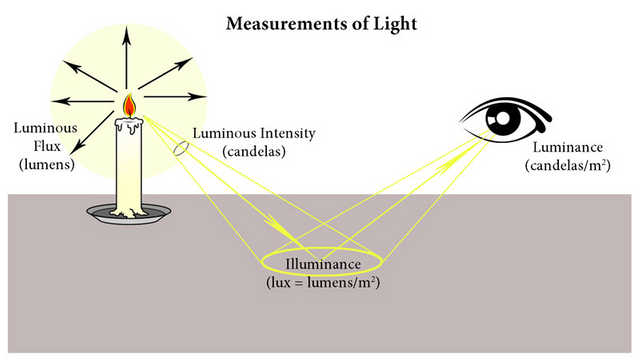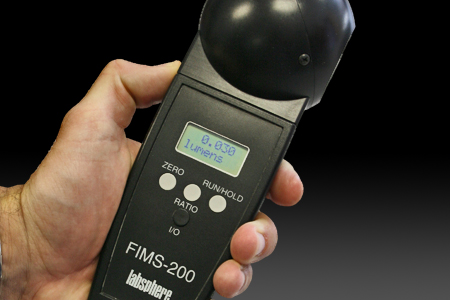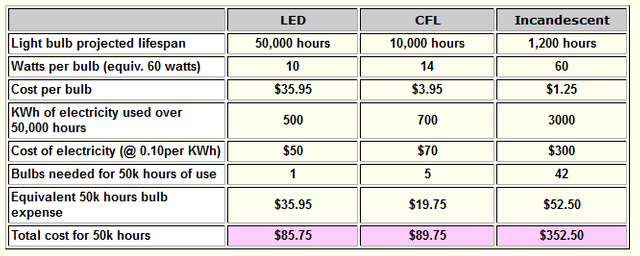Learning to measure the illumination or light flux
For many years, incandescent lamps were the only source of artificial light. Recently, due to the low efficiency of these types of lighting, they are gradually replaced by other light sources, for example, LED. However, incandescent lamps have their advantages. Their cheapness, the presence of a continuous spectrum of radiation, closest to natural sunlight, leads to the fact that they continue to be used in many cases. To correctly assess the possibility of using incandescent lamps and the possibility of replacing them, it is necessary to measure and take into account the main characteristics of incandescent lamps.
Optical characteristics of radiation

One of the main technical characteristics of incandescent lamps is the light flux, which is the power of radiation perceived by the human eye. This value is measured in lumens. By definition, the lumen is a luminous flux that emits a point-type source having a light intensity of 1 candle. Thus,
1 lm = 1 kd X 1 cp.
An important element in estimating the radiation of a source is such a parameter as the illuminance created by it, which is the density of the flux incident on some surface illuminated by it. Illumination is measured in lux. In this case,
1 lx = 1 lm / m².

Method for determining the luminous flux of a luminaire
In order to compare different light sources, it is necessary to estimate their luminous flux. To measure its value, various methods are used. One of these methods is to use a special device - a spherical photometer.

In the process of measuring the lamp is placed in the center of a special sphere. In its wall there is a photoreceiver with a filter whose bandwidth corresponds to the spectral sensitivity of the human eye. The signal at the output of the photocell depends on its illumination and is proportional to the light flux of the source.
Comparing the signals of the photocell and the previously obtained value using a reference light source, determines the luminous flux of the light source under investigation.
After measuring this indicator, you can determine the amount of light output from an incandescent lamp. This value shows which luminous flux generates the luminaire at a cost of 1 W of power.
Comparing the performance of some light sources
The light output for light sources depends on their power. For example, for conventional incandescent lamps, whose power lies in the range from 5 W to 200 W, this value varies from 4 to 13 lm / W. Light output of incandescent lamps also depends on their design.
The table below shows the data for different types of luminaires.

As can be seen from the table of light fluxes, incandescent lamps are inferior to both luminescent and LED luminaires. An 10 W LED bulb is equivalent to 60 W of incandescent lamp when light output is considered to be same.
This is due to the fact that most of the electricity that supplies the filament, they turn into heat.
Use of the luminous flux value when calculating the lighting in a room

There are several methods for calculating lighting in a room. Most of them use the value of the lamp's light flux. For example, when calculating by the method of using the luminous flux factor for the necessary illumination of the workplace, taking into account the auxiliary values depending on the type of luminaire and the room, the total luminous flux of the lamp is calculated.
After that, a standard lamp, which is close to the luminous flux, is selected. If the required indicator for lighting the room is more than can be given by these lamps, the number of luminaires is increased and recalculation is carried out.
If there is no light flux for the lamp, then you can use the value of its power. In this case, an approximate recalculation taking into account the light output of the light source used is carried out.
Conclusions:
- Despite the reduced efficiency of incandescent lamps, they continue to be in demand.
- An important lighting parameter of luminaires is the magnitude of the light flux.
- This parameter is used when calculating indoor lighting.
- For comparison of efficiency of various fixtures, including incandescent lamps, the value of luminous efficiency is used.
- Depending on the power of incandescent lamps have a different light output, and with the increase of the first value, the second value also increases.
Content and Image sources :
1, 2, 3 and 4

The best education
Light and heat are two inter-dependent factors. If there is a light obviously there will be heat. My study to research on the nature of heat and light has brought into the light of results that some sources emit more heat and less light while other are vice versa. Amid my research, I have that goniophotometercan be one of the best photometers for researchers and indigenous students to study light.